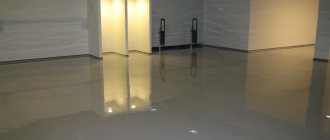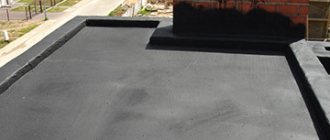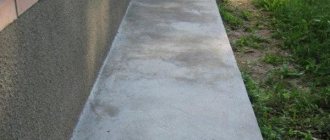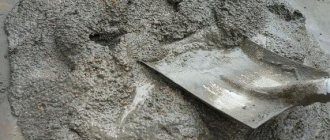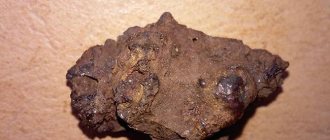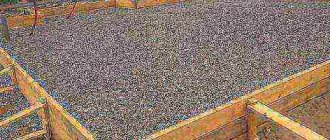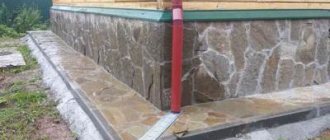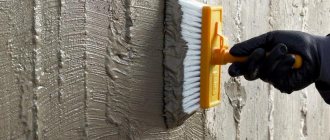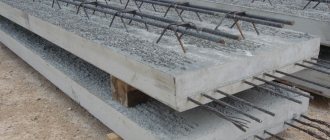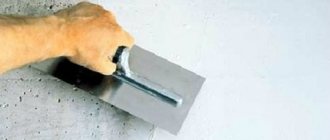- home
- Services
- Concrete repair
Calculate the cost of work
No website will give you exact answers to all your questions. Leave a request and discuss the task with a live person.
Concrete repair is work that has to be faced sooner or later. Despite the strength and durability of concrete and reinforced concrete structures, they are susceptible to the destructive effects of time, mechanical damage and the influence of an aggressive environment.
High-quality and timely repair of concrete allows you to increase the durability of concrete structures and extend the life of a building or structure, regardless of its area of application. This is especially true for the energy sectors (pipes, dams, power line supports), transport (tunnels, bridges, airfield pavements), for industrial facilities (coating and floor slabs, building frames, supports and beams, liquid storage tanks), for housing and communal services facilities (sewage treatment plants, reservoirs, collectors) and restoration (historical heritage monuments).
Our company carries out professional repair and restoration of reinforced concrete structures subject to static and dynamic loads in various environments, as well as those requiring repair due to disruption of the technological process at the manufacturing or installation stages. Our experts will assess the causes of defects, the quality of damage and select the appropriate method and materials for restoring reinforced concrete.
Examples of our objects
To
City: Moscow
About the object:
The Aviamotorny collector was in a deplorable state from long-term use; restoration work was not carried out on time, so the field for repair work turned out to be impressive
Task:
The Aviamotorny collector was in a deplorable state from long-term use; restoration work was not carried out on time, so the field for repair work turned out to be impressive
After
What was done to solve the tasks:
— Injection waterproofing with hydroactive polyurethane foams — Installation of coating waterproofing with an elastic cement-based material — Protection of reinforcement and metal structures from corrosion with polymer-cement compositions resistant to chlorides and carbonization — Repair of concrete with fiber-reinforced modified polymer-cement compositions.
View full photo report
View all
Get a free consultation
Leave your details and our specialists will answer all your questions
Destruction of reinforced concrete: everything is under control
Destruction of concrete and reinforced concrete structures can occur due to a number of reasons:
- concrete fatigue (i.e. loss of structural integrity) due to long service life;
- increased shock loads;
- increase in payloads;
- mechanical damage;
- chemical or thermal effects;
- initially poor quality of raw materials and (or) violation of technological processes;
- exposure to weather conditions (sudden temperature changes, etc.);
- exposure to an aggressive environment (sea water).
Selection of repair mixture
When choosing a high-quality repair and restoration mixture, it is best to use the recommendations of specialists. Some of them are given below.
How to choose a repair mixture
First, the concrete structure is inspected to determine the type of damage, the size of cracks or chips, and determine the loads on the unit being repaired. To choose a brand of repair mixture, study the characteristics of two or more compositions, compare prices and other features of the materials, and familiarize yourself with the working composition. The main requirement for the components of the mixture is non-toxic and safe for people. If simple leveling of the surface is assumed, then the solution must have high adhesion.
Comparison of parameters of some brands of repair compounds:
The most important parameters of the repair mixture:
- Hardening time. The shorter the drying period, the better the quality of the repaired surface.
- Consumption indicated on the packaging.
- Level of protection against UV radiation, negative temperatures and aggressive environments.
- Possibility of shrinkage of the mixture.
After calculating the thickness of the repair layer and its area, the required amount of repair mixture is purchased. When repairing foundations based on concrete solutions, a deep-penetrating mixture is optimal. To repair or restore walls or other vertical surfaces, use a thixotropic mixture with a thick consistency and high adhesion.
Attention - cracks!
Damage to concrete can be identified by the presence of cracks. Despite the fact that not every crack is the result and indicator of damage, this can already be perceived as a signal about the possibility of an emergency situation. It is especially worth paying attention to those cracks that appear on the facades of buildings. It is because of them that mold can appear in the premises, which is very difficult to remove. If you can notice such a crack as soon as it appears, then you can get rid of the consequences without resorting to expensive and complex repair methods. As a rule, industrial mountaineering helps in these cases.
A detailed study of the reasons for the appearance of cracks, their characteristics (opening width, depth, location on a structural element of the structure) allows you to choose the appropriate concrete repair method.
In addition to cracks and cavities, defects that violate the integrity and lead to a decrease in the strength of concrete in products and structures include:
- increased porosity;
- potholes, chips, voids, cavities, peeling, exposed reinforcement, construction seams;
- ruptures that occur during the concreting process.
External defects can appear not only during long-term or incorrect operation of an object or product, but also at the manufacturing stage, during transportation and installation.
There are often cases when repairs to concrete and reinforced concrete structures are necessary due to hidden damage to the concrete. Invisible defects can be caused by a violation of the technology for laying and compacting concrete, its insufficient plasticity, the presence of shells inside, displacement of the formwork, untimely hardening of concrete, excess reinforcement, etc.
Repairing concrete with hidden defects requires special skills and experience from specialists. Such problems can only be identified using technologies that use ultrasonic pulses and gamma ray transmission or drilling of samples. More accurate data is provided by instrumental methods for assessing the condition of structures using express non-destructive testing methods.
Spatially, all defects are divided into horizontal, vertical, inclined, upward or downward, internal and external. All this influences the choice of method for repairing concrete and reinforced concrete. Today, there are many modern materials and technologies that make it possible to carry out the corresponding set of works economically and efficiently. For example, if there are cracks, the repair mixture is most often poured or injected under pressure.
Manufacturers and range of repair mixtures
Existing dry or cast mixtures have different compositions, differ in properties, have different consumption, price, volume and weight in packaging. Below is a list of the most popular Russian and foreign manufacturers:
- Russian mixture Emaco. Improves the technical and operational characteristics of damaged concrete structures. Composition: crushed quartz sand, environmentally friendly viscous polymers. Emaco can be used to seal cracks measuring 2-20 mm. Emaco repair mixture has high immunity to negative temperatures, which allows you to work with it in winter.
- Russian repair and restoration mixture "Birss". The frost resistance of this mixture is such that regeneration of the concrete surface can be carried out even at low temperatures outside. In addition, the composition has high strength and good moisture resistance.
Mixture of Russian production Emaco
- Consolit Bars is a casting mixture produced in Russia. It is used for repair and restoration of a wide variety of structures and structures made of concrete. Does not shrink, has a high degree of adhesion.
- Masonry mixture Ceresit CN 83. Designed for use in high humidity, it does not shrink and has a moisture-resistant surface after hardening. You can work with the mixture at low temperatures.
- Knauf waterproofing mixture. Leveling the concrete surface, forming a moisture-resistant and vapor-proof film. The mixture is environmentally friendly, intended for use indoors and outdoors.
- Russian repair mixture Indastro. Repair and restoration mixture Indastro NC60 is used for restoration, reconstruction and restoration of any concrete structures, structures and foundations.
- Italian repair mixture Mapei. Easy restoration or repair of any concrete surfaces. The mixture shrinks slightly, but cracks do not form. Hardened surfaces are resistant to abrasion and mechanical wear. The composition of the Mapei SW brand is designed to work in reinforced concrete structures. It behaves stably and steadily at different temperatures and humidity, creates an anti-corrosion, moisture-resistant coating that protects concrete reinforcement. The hardened solution is an excellent waterproofing agent.
Mapei – a mixture for the restoration of reinforced concrete structures
- Russian composition "Mount Crystal". It is used for the repair and restoration of concrete, for the restoration of damaged concrete, reinforced concrete, foam concrete and aerated concrete structures. Designed for filling cracks in concrete, filling technological holes and other recesses, strengthening chips, eliminating erosion and cavities in concrete structures, correcting defects in old reinforced concrete structures, repairing and restoring concrete floors and other surfaces, including floors.
- Siltek is a mixture produced in Russia. Brand B25 is constantly in demand in the construction market, designed for the repair and restoration of any surfaces made of concrete and cement, and qualitatively eliminates defects that may arise after filling joints between floors and panels.
Concrete repair is a matter of particular importance
It should be remembered that there are no fixed and stable cracks. If even small defects are detected, it is necessary to carry out prompt repairs, otherwise the destruction of concrete may worsen, which will inevitably lead to critical results.
Our company offers a full range of services for the repair and protection of concrete and reinforced concrete structures. We carry out all types of work in strict accordance with the necessary current industry standards.
Extensive practical experience, highly qualified employees, a wide arsenal of technical equipment and the use of modern professional repair materials and technologies are a guarantee that all work is completed on time and at the highest quality level.
Self-production
A durable and strong composition for repairing damaged concrete in private construction can be made independently. To do this you will need one part cement, three parts purified fine sand. Instead of pure water, an aqueous solution of PVA or Bustilat glue is used in the proportion: one part glue, three parts water.
To prepare the repair mortar, cement and sand are thoroughly mixed, and a mixture of glue and water is added until the mortar becomes plastic. It is brought to homogeneity with a construction mixer. Prepare this repair mixture for concrete immediately before starting work so that it does not set prematurely. It is suitable for repairing and updating floor screeds; a more plastic and thick composition is used for repairing vertical concrete surfaces.
Prices for repair and restoration of concrete
| No. | Name of works | Unit change | Price per one. (rub.) |
| 1. | Restoring damaged concrete | m2 | from 2500 |
| 2. | Restoration of the destroyed layer of concrete walls using solutions from dry polymer-cement mixtures 20 mm thick | m2 | from 3500 |
| — Contouring of repaired areas with diamond discs, removal of damaged concrete, moistening the surface before applying a polymer-cement binder composition — Preparation and application of a polymer-cement binder composition — Preparation and application of a 20 mm thick quick-hardening polymer-cement repair composition — Wetting the surface before applying a leveling polymer-cement composition, preparation and application of a polymer-cement composition grouting the surface | |||
| 3. | Restoration of the destroyed layer of concrete floors with solutions from dry polymer-cement mixtures 20 mm thick | m2 | from 3100 |
| — Contouring of repaired areas with diamond discs, removal of damaged concrete, moistening the surface before applying a polymer-cement binder composition — Preparation and application of a polymer-cement binder composition — Preparation and application of a 20 mm thick quick-hardening polymer-cement repair composition — Wetting the surface before applying a leveling polymer-cement composition, preparation and application of a polymer-cement composition grouting the surface | |||
The price includes the cost of the work performed. The cost of materials is calculated additionally depending on the project, technical specifications, and work statement.
Work technology
Before repairing cracks in concrete, you should prepare:
- heavy hammer;
- bit;
- hard brush with metal bristles;
- putty knife;
- brush;
- grater;
- trowel;
- pieces of reinforcement up to 10 cm long.
Work order:
- At the first stage, it is necessary to carefully check the damaged area and eliminate any emerging chips using a chisel and hammer. The area where the chip was removed is trimmed, the crack is roughly processed along its entire length, expanding it slightly.
- Small and large fractions of concrete are removed from the crack using a coarse brush, then cleaned of dust using a vacuum cleaner. Using a spatula, an additional deepening of the seam is made to prepare the surface for the repair mortar to firmly set.
- If the width of the crack exceeds 4 mm, it is recommended to use local reinforcement, for which, using a grinder, transverse overlapping grooves are sawed to a length of up to 10 cm, into which pieces of reinforcement with a thickness of 4 mm or more are placed. In the same way, through cracks in the base of the floor or ceiling slabs are prepared for repair.
- If, when preparing a problem area, reinforcement exposed on the surface is found, it is necessary to clean the metal parts using sanding paper and then treat it with a solution that protects the metal from rusting.
- Before applying the repair composition, the surface is treated with a primer.
- The next step is to prepare the repair solution. Expanding cement is more often used to seal cracks made of CFRP with a liquid glass additive. This mixture is applied to the area and moistened. When filling deep cracks, it will be necessary to apply the solution several times, waiting for each previous layer to rise.
- After the repair composition has dried, the joint is grouted, leveling the surface of the problem area.
- Filling of cracks in horizontal surfaces is carried out with the level of the repair mortar exceeding the level of the screed, since the mixture shrinks when standing up. Excess solution is removed with a grinding machine.
Work on the repaired surface (laying roofing material on the roof, laying the finishing coating on the self-leveling floor, facing the outer wall with brick) is carried out no earlier than 72 hours later.
